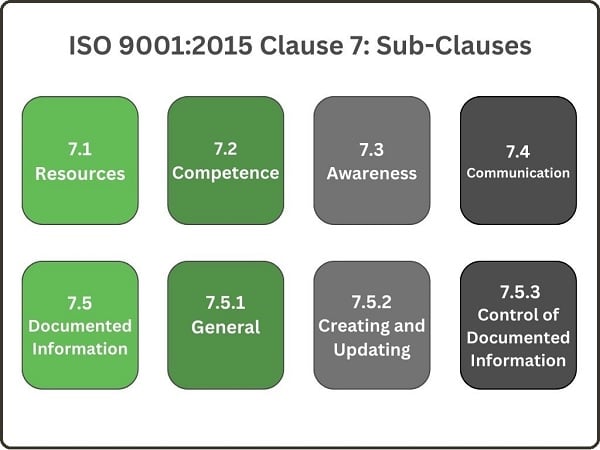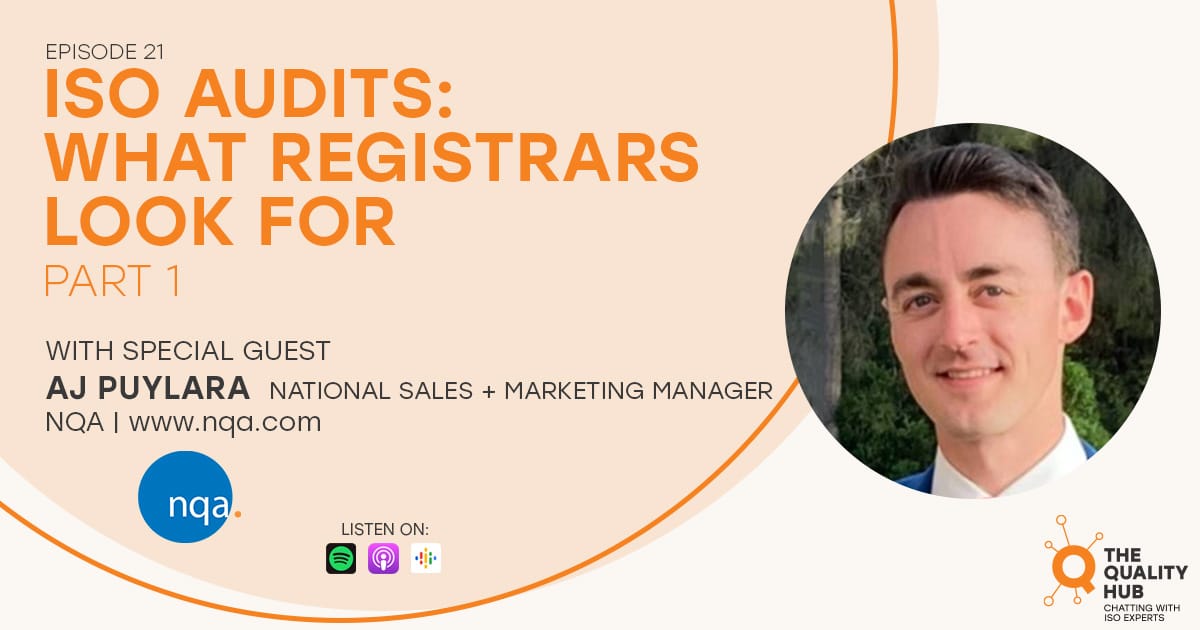ISO 9001:2015 Clause 7.5.3
What is ISO 9001:2015 Clause 7.5.3?
Clause 7.5.3 of ISO 9001:2015 addresses the preservation of documented information. It focuses on ensuring that the necessary documented information remains legible, readily identifiable, and retrievable when needed.
Key points outlined in Clause 7.5.3 include:
Legibility and Readability:
The clause emphasizes the importance of ensuring that documented information remains legible throughout its intended retention period. This involves using appropriate formats, fonts, and storage methods to prevent degradation or loss of information over time.
Identification and Retrieval:
Documented information should be adequately identified to ensure easy retrieval. This includes labeling, indexing, or categorizing documents and records to facilitate quick and accurate retrieval when necessary.
Handling and Protection:
Organizations are required to establish measures to protect documented information from damage, deterioration, loss, or unauthorized access. This involves implementing secure storage, access controls, backups, and disaster recovery plans.
Get a Free Quote
Retention and Storage:
Define appropriate retention periods for different types of documented information based on regulatory, legal, or organizational requirements. Ensure proper storage conditions to preserve the integrity of the information for the required duration.
Conversion and Migration:
If there are changes in technology or formats that affect the readability or accessibility of documented information, organizations should consider appropriate measures to ensure the continued availability and usability of that information.
Disposition of Obsolete Information:
Establish procedures for the disposition of obsolete documented information. This may involve archiving, disposal, or transfer of information while ensuring that relevant regulatory and legal requirements are met.
Overall, Clause 7.5.3 underscores the significance of preserving the legibility, identification, and accessibility of documented information throughout its lifecycle. It aims to ensure that information remains usable, retrievable, and protected from damage or loss, supporting the organization in maintaining effective control over its documented information while meeting compliance and operational needs.
How do you comply with Clause 7.5.3?
Compliance with Clause 7.5.3 of ISO 9001:2015, which focuses on the preservation of documented information, involves several steps to ensure the integrity, accessibility, and protection of information throughout its lifecycle:
Establish Document Preservation Procedures:
Develop and implement procedures for preserving documented information. This includes defining the appropriate formats, storage methods, and retention periods based on regulatory, legal, and organizational requirements.
Ensure Legibility and Readability:
Use suitable formats, fonts, and storage conditions to maintain the legibility and readability of documented information over time. Ensure that information remains clear and understandable throughout its intended retention period.
Identification and Retrieval:
Label, index, or categorize documents and records for easy identification and retrieval. Implement a systematic approach to organize and store information, making it readily accessible to authorized personnel when needed.
Handling and Protection Measures:
Implement measures to protect documented information from damage, deterioration, loss, or unauthorized access. This involves secure storage, access controls, encryption for electronic information, backups, and disaster recovery plans.
Retention and Storage Conditions:
Define appropriate retention periods for different types of documented information. Ensure that storage conditions, whether physical or electronic, meet requirements to preserve the integrity of the information for the necessary duration.
Adaptation to Technological Changes:
Monitor technological advancements and assess their impact on the readability or accessibility of documented information. Implement measures to adapt, convert, or migrate information to new formats or technologies as necessary while ensuring continued usability.
Obsolete Information Disposition:
Establish procedures for disposing of obsolete documented information. This might involve archiving, secure disposal, or transfer of information according to regulatory and legal requirements.
Regular Reviews and Audits:
Conduct periodic reviews and audits to assess the effectiveness of preservation measures. Verify that documented information remains legible, identifiable, and accessible, and make improvements based on findings.
Employee Training and Awareness:
Educate employees on the importance of preserving documented information. Provide training on proper handling, storage, and disposal procedures to ensure compliance and maintain the integrity of information.
By following these steps and integrating them into your organization’s processes, you can effectively comply with Clause 7.5.3 of ISO 9001:2015, ensuring that your documented information remains intact, accessible, and protected throughout its lifecycle.

Other ISO 9001:2015 Clauses:
What is the History of Clause 7.5.3?
The history of Clause 7.5.3 in ISO 9001:2015 can be understood in the context of the evolution of the standard’s approach to documentation and the management of documented information.
Earlier Versions
Before the release of ISO 9001:2015, earlier versions of the standard (such as ISO 9001:2008) had specific requirements for documentation but didn’t explicitly cover the preservation of documented information in a distinct clause as seen in the 2015 version.
With the revision leading to the publication of ISO 9001:2015, there was a deliberate shift in focus. The standard moved away from prescriptive documentation requirements towards a more flexible approach, emphasizing the need for organizations to determine their necessary documented information based on their context, risks, and operational needs.
ISO 9001:2015
The introduction of Clause 7.5.3 in ISO 9001:2015 marked a clearer emphasis on the importance of preserving documented information. This clause was developed to address the need for organizations to ensure that their documented information remains legible, identifiable, accessible, and protected throughout its lifecycle.
Maintaining the Integrity and Accessibility of Documented Information
The historical context of Clause 7.5.3 reflects a recognition within the ISO 9001 standard that maintaining the integrity and accessibility of documented information is crucial for supporting the effective operation of a quality management system. By specifically highlighting preservation requirements, the standard underscores the significance of safeguarding information from loss, damage, or obsolescence.
Overall, the inclusion of Clause 7.5.3 in ISO 9001:2015 represents a conscious effort to emphasize the importance of preserving documented information as an integral part of managing a quality management system effectively, ensuring that information remains usable and accessible when needed.
Helpful Resources: ISO Audits – What Registrars Look For Part 1
In this episode of “The Quality Hub: Chatting with ISO Experts,” host Xavier Francis interviews AJ Puylara, National Sales and Marketing Manager at NQA, a global certification body. AJ shares his experience in the ISO industry and discusses the ISO certification process. He highlights the steps involved, including engaging with a third-party ISO consultant or registrar and conducting a gap assessment. Listen Now
Consulting Support for ISO 9001
Every year, we help hundreds of small businesses achieve ISO 9001 certification. Support for ISO 9001 is available through any of our Consulting Programs As an American business with a story like yours, we know that time is valuable. Our expert consultants are here to take on the difficult, technical aspects of certification so you can focus on your business. They’ll work with you every step of the way until you’re successfully certified. Interested? Get a Free Quote.
In many industries, ISO 9001 has become a supply-chain requirement. When landing a big contract, ISO 9001 certification could make all the difference.

About Core Business Solutions
"Core Business Solutions was started by my brother, Mike Dawson, and myself, true entrepreneurs at heart looking for a better way to make a living and help small businesses improve the quality of the products and services they provide.
The bottom line: we are real people that have developed a team to come along side you to help you grow and succeed."
-- Scott Dawson, President
Related Standards
We provide consulting support for various other standards, as well as support for companies seeking multiple certifications through an Integrated Management System.
AS9100
Aerospace Manufacturers
AS9120
Aerospace Distributors
ISO 14001
Environmental Management Systems
ISO 27001
Information Security Management Systems
ISO 20000-1
Service Management Systems
ISO 45001
OH&S Management Systems
ISO 13485
Medical Device Manufacturers
AS9100
AS9120
ISO 14001
ISO
20000-1
ISO 27001
ISO 45001
ISO 13485
Equip Your Business to Meet ISO 9001 With CORE
At Core Business Solutions, we’re here to equip your company for success in meeting ISO 9001 requirements. We’ve helped hundreds of small businesses grow and deliver the best solutions to their clients. We provide ISO training services, consulting help, and compliance software and to help you get certified and stay certified. We focus on optimizing your processes and helping you implement an ISO-compliant QMS. When you partner with us, you’ll get the tools and help you need for success. For more information on the ISO 9001:2015 standard, please visit our articles page. You can also call our consulting office at 866-354-0300 or contact us online.
Do you want to update your existing ISO 9001 QMS System or refresh it?
We provide consulting services to assist you in your ISO 9001 Quality Management System refresh. We listen, conduct a gap analysis, update your Quality Policy and any necessary documentation or procedures, find areas of waste or improvement, simplify and automate. And we do it fast. Core offers firm, fixed pricing. Download our information sheet today to learn more or call us at 866-354-0300 Extension 2.

